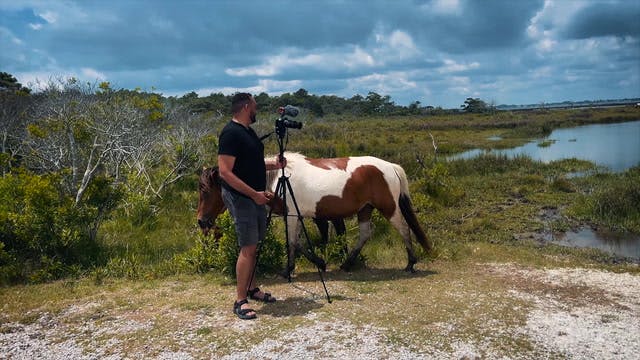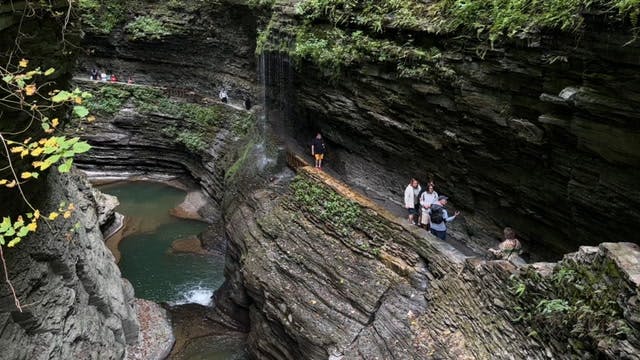Antietam: A Bloodletting at Burnside Bridge
As Union forces try to flank the Confederate positions they come under heavy fire as they try to cross Antietam Creek at the famous Burnside Bridge.

As Union forces try to flank the Confederate positions they come under heavy fire as they try to cross Antietam Creek at the famous Burnside Bridge.
The pulse of what's trending on The Parks Channel. Check out the most watched videos.


37°56'4.26"N, 75°22'32.44"W
Assateague Island
Maryland
Virginia
Discover one of the few places in America where horses roam free. Assateague Island is a barrier island between Maryland and Virginia.


42°22'50.07"N, 76°52'24.41"W
Watkins Glen State Park
New York
Experience one of the most visited parks in the Finger Lake region of New York State.


42°54'37.14"N, 76°47'47.43"W
Women's Rights NHP
New York
From the Statues, to the Church, and Museum, take a tour and learn about the history of Women's Rights in Seneca Falls.

Appomattox Court House National Historical Park commemorates the site where General Robert E. Lee surrendered to Union General Ulysses S. Grant on April 9, 1865, effectively ending the Civil War. Preserving original structures like the McLean House, where the surrender took place, and the historic village, the park offers visitors a glimpse into a pivotal moment in American history. Rich in artifacts and exhibits, it serves as a poignant reminder of reconciliation and the nation's journey toward unity after a tumultuous period.
Go to park page
The World War II Memorial honors the 16 million people who served in the American armed forces during World War II. It consists of 56 pillars, representing the states and territories of the United States at the time of World War II, as well as a pair of small triumphal arches for the Atlantic and Pacific theaters. The memorial surrounds an oval plaza and fountain, and replaces the former site of the Rainbow Pool at the eastern end of the Reflecting Pool, between the Lincoln Memorial and the Washington Monument.
Go to park page
Puʻuhonua o Hōnaunau National Historical Park is located on the west coast of the island of Hawaiʻi. The historical park preserves the site where, up until the early 19th century, Hawaiians who broke a kapu (one of the ancient laws) could avoid certain death by fleeing to this place of refuge or puʻuhonua. The offender would be absolved of their crime and could start anew. Today, the National Historic Park stands as a reminder of Hawaiian culture and history. Visitors can see traditional hale (house), heiau (temple), and puʻuhonua (place of refuge), as well as enjoy hiking, fishing, and swimming. Puʻuhonua o Hōnaunau National Historical Park is a unique and special place that should not be missed on a visit to Hawaiʻi.
Go to park page
Cape Breton Highlands National Park is a stunning natural gem located in the northern region of Nova Scotia, Canada. The park boasts over 950 square kilometers of rugged mountains, deep valleys, and winding coastal roads that offer breathtaking views of the Atlantic Ocean. Visitors can explore the park's many trails, which range from easy strolls to challenging hikes, and encounter a diverse range of wildlife, including moose, bald eagles, and black bears. Cape Breton Island is also home to many vibrant communities, including the Mi'kmaq people, who have lived on the island for thousands of years. The island’s rich culture and history, vibrant arts scene, historic landmarks, and strong Gaelic heritage, make it a destination with something for everyone.
Go to park page
Mojave National Preserve is a special place, and not just if you like Joshua Trees. It's the third largest unit of the National Park System in the lower 48, and the largest National Preserve. The preserve was created within the Pacific West Region of the National Park Service to protect and manage a unique and diverse array of natural, cultural and historic resources. The Mojave Desert is a harsh and beautiful place, and the preserve encompasses some of its most iconic features, including the Kelso Dunes, the Marl Mountains and the Cima Dome, as well as volcanic formations such as Hole-in-the-Wall and the Cinder Cone Lava Beds. The preserve is also home to an abundance of plants and animals, including many that are rare or endangered. Visitors can enjoy a variety of activities in the preserve, from hiking and camping to bird watching and stargazing.
Go to park page
Watkins Glen State Park in New York’s Finger Lakes region is famous for its stunning gorge and 19 waterfalls along a two-mile trail. Highlights include Rainbow Falls, where water flows over a stone walkway, creating a magical scene. Visitors can explore the gorge and rim trails, camp, picnic, or swim in the park’s pool. With its dramatic scenery and rich history as a tourist destination since the 1860s, Watkins Glen remains one of the most popular state parks in New York, especially during summer and fall when the foliage and waterfalls are at their most breathtaking.
Go to park page
We curate videos that entertain and inform. Join our growing community of creators – or simply explore.
Explore videos

Create your own profile, playlists and checklists.